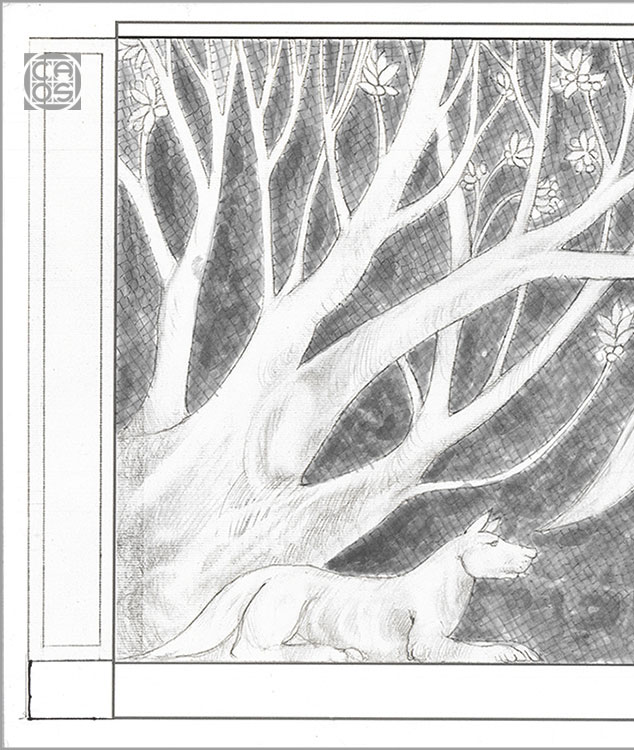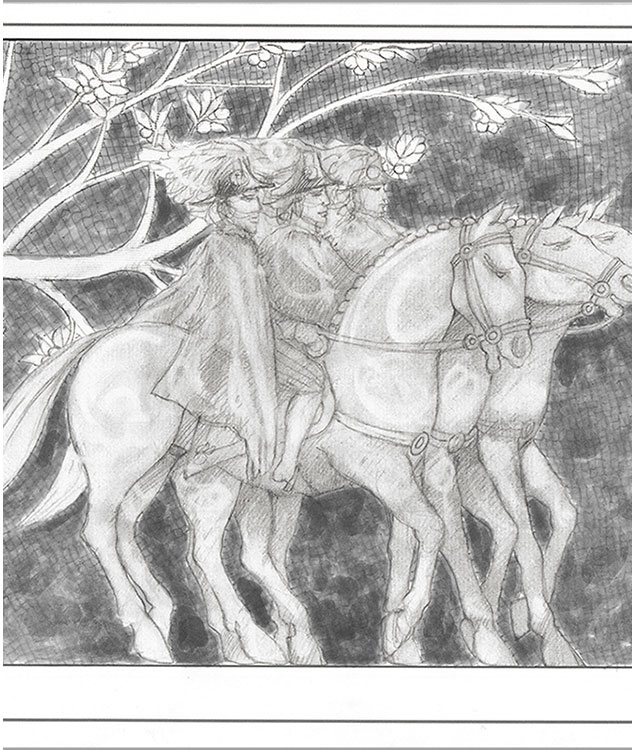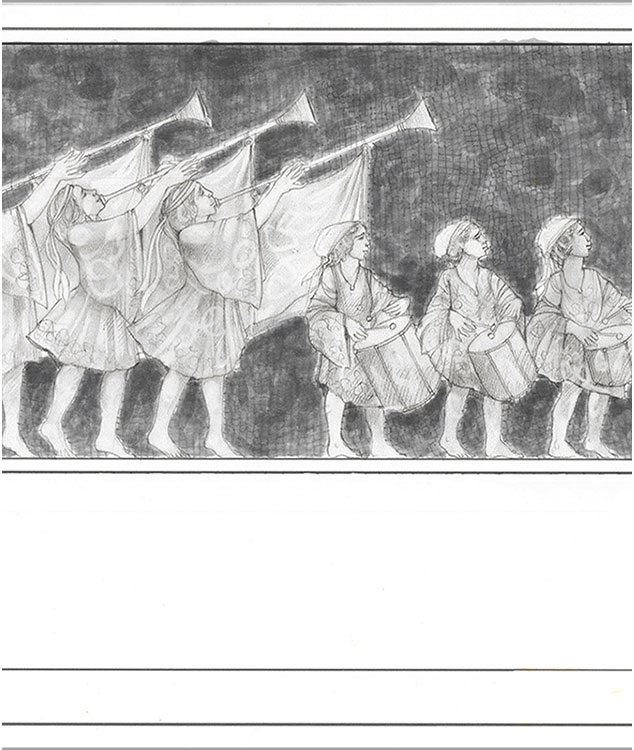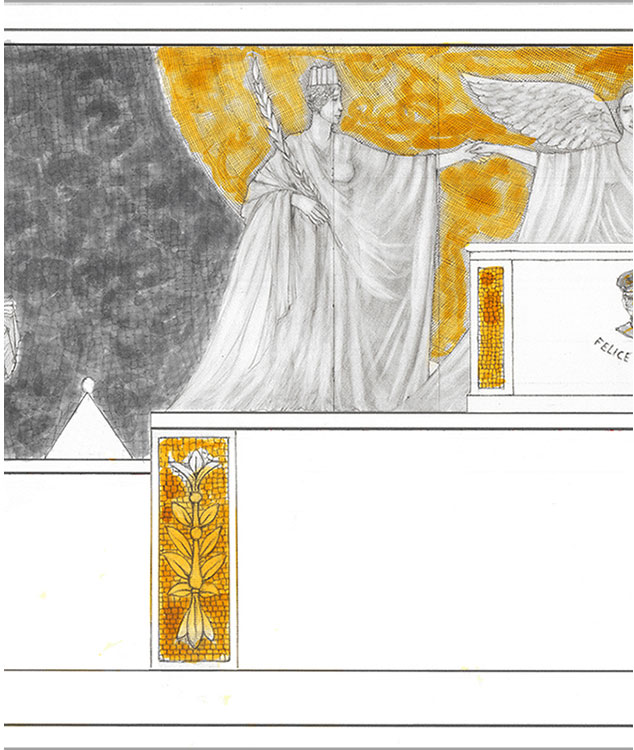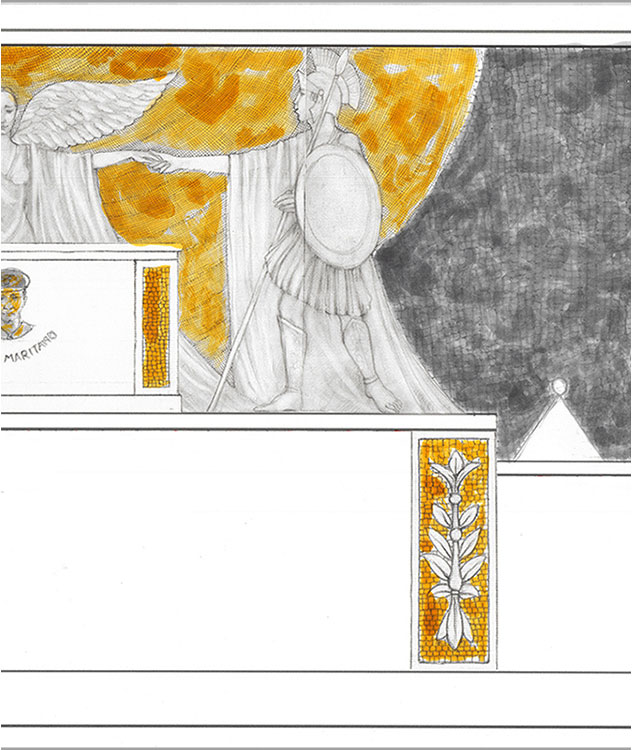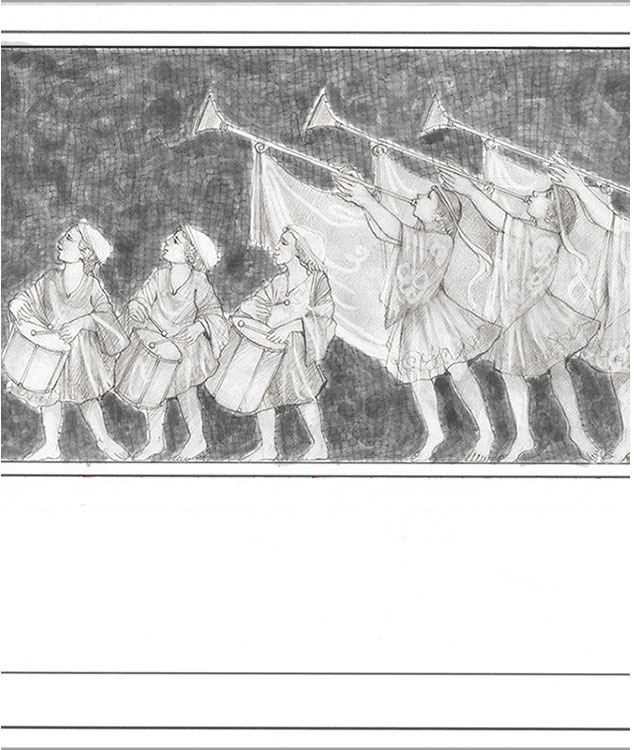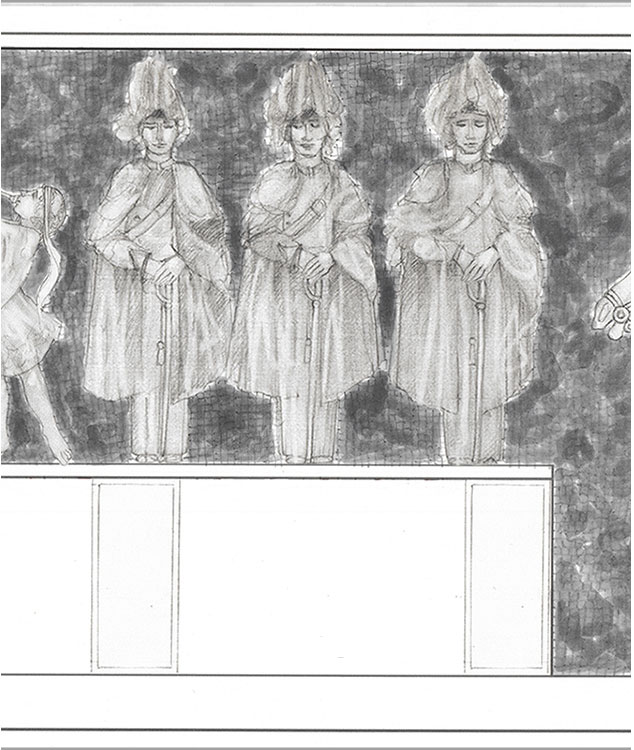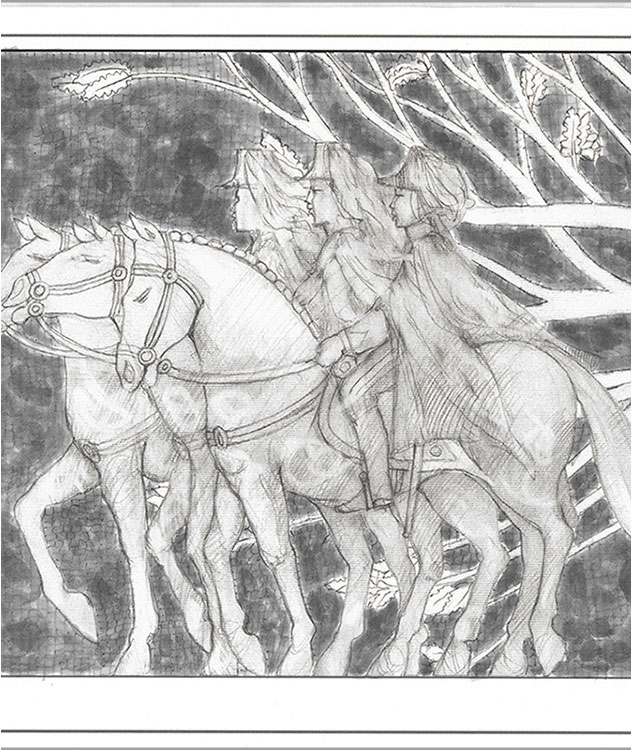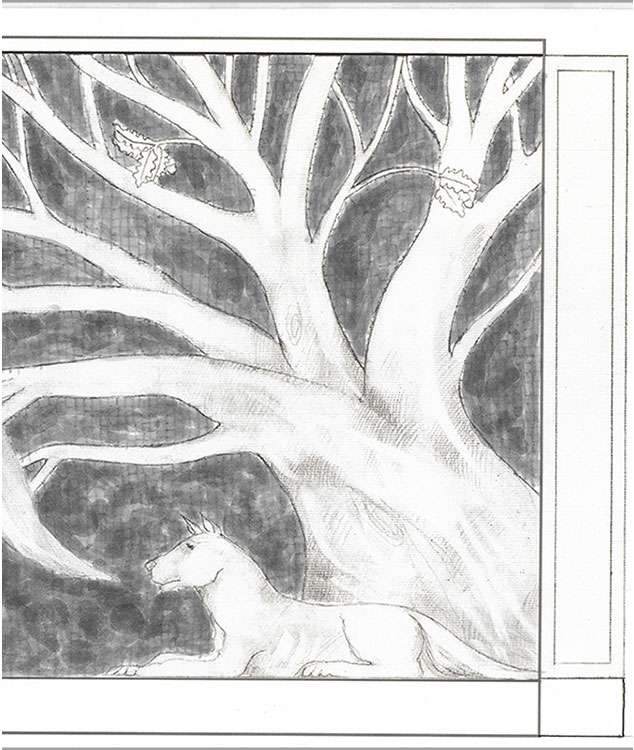premise
The associated artists of CAOS propose themselves for the design and creation of celebratory and commemorative monuments. The theme is the result of consultation with the client and an in-depth philological examination aimed at identifying the formal, symbolic, allegorical and content charactheristics of the work.
The predilection for figurative themes, which therefore give centrality to the human figure, does not preclude the possibility of abstract creations, in particular thanks to the collaboration with the architect-artist Michelangelo Eremita who developed this particular genre of formalism.
About the appropriateness of art in everyday life
In history, beauty is a relative aesthetic attribute or value, linked to human civilizations in their evolution. It is not an absolute value.
In art, beauty underlies the artist’s ability to build a coherent system of abstract meanings, concepts and values and also underlies the ability to transmit them intact and with extreme synthesis and effectiveness such as to directly reach those who are able to grasp them.
Art does not need to be explained, it does not need to be translated or interpreted; art can be read, understood, welcomed, loved; but in it, beauty is an absolute value.
Art does not transmit subjective values, it is not ethical; it refers to basic and fundamental, mysterious rules, linked to illusion, lies, dreams, perhaps to our ancestral fears.
For this reason, beautiful expressions of art contain messages that can be grasped at any time and everywhere, assuming traits of absoluteness or giving the illusion of it.
The questions we must ask ourselves and ask our children today are the following:
“how much art knowledge is there in us?”;
“how much of this knowledge is at the service of mankind?”
A real reflection is needed on the need to conquer a human society based on knowledge ad art; therefore an objectively beautiful society.
Attention towards art from early age must be cultivated in our children. We must take children to museums, to art galleries, we must demand that schools provide teachers od Art History and not just Drawing; we must expect these teachers to transmit a love for art.
Understanding art means knowing how to see and knowing how to see is a difficult goal to achieve; sometimes one life is not enough. We must therefore show the way to young people so that they can choose.
Hypotheses and projects for a renaissance of the arts
Today, not only Religious Institutions of Private Collectors but also and perhaps above all, Public Administrators, play an important function in developing people’s sensitivity towards art. They have the possibility of mending a huge fracture that has been created between the people and contemporary art since the 20th century.
Art must return close to people to lay the foundations for its rebirth. In the planning of master plans, residential areas and in the future redesign of the disheartening industrial areas, recently discouraged by natural disasters, we must return to placing man and humanity at the center and this also passes through careful research and selection of artists capable of carrying out artworks that make the community cohesive. Artworks around which the human community can rally, exactly as happened in our Renaissance with the contribution of the Church but also of enlightened and aware Dominants, such as Federico Da Montefeltro os Sigismondo Malatesta or Lorenzo Dei Medici.
Such work has strong political underpinnings; whoever wants to take in this pleasant and exciting responsibility will get the history. Whoever is able to enrich the community with what is created for it and not what is built for a claimed honor to the “art” itself will have created a thousand possibilities for his fellow citizens.
In these pages we wanted to present some sketches of great artworks for the sole purpose of giving an idea of the possibilities offered by the imagination of the artist Mario Eremita and the architect-artist Michelangelo Eremita.
The Glorious Path
The concept involves a bas-relief work set in a marble and glass mosaic background.
This large bas-relief is dedicated to the memory of Marshal Felice Maritano but is not intended to be a funerary or merely commemorative monument. It is an artwork of solid figurative and symbolic content which, however, intends to address the difficulty of rhetorical articulation, with particular delicacy, originality and discretion, leaving ample space for subtle references to Greek and Byzantine art.
The artist’s primary need is to communicate to the hero’s family, in particular his children; to give them first the firm recognition of the value of the person well before that of the soldier and the officer of the Army. Because they are born heroes, they art born with that particular empathy that makes certain people so special. Ideally communicating to the Marshal’s children, the artist opens a dialogue with the young non-commissioned officer students of the School, who will have before them an artwork where muscular rhetoric is left out, compared to the primacy of reason and clear will, which arises from the mind and not by physical strength.
Here is therefore the figurative and not conceptual or formally abstract need. Each subject here has its own existence, its own vital tension, they are not simple physical presences but beings who live their personal experience in the world and who are here for a reason that unites them in different ways, each symbolic and evocative. For example, the same horses have different poses that identify their individual emotionality. The axial symmetry is followed to give the meaning of order and solemnity, although it is lacking in proximity to the altar, where, to the right and the left of the Winged Victory, Turreted Italy and the “Symbolic Soldier”, personified by the mythological figure of Hector, appear.
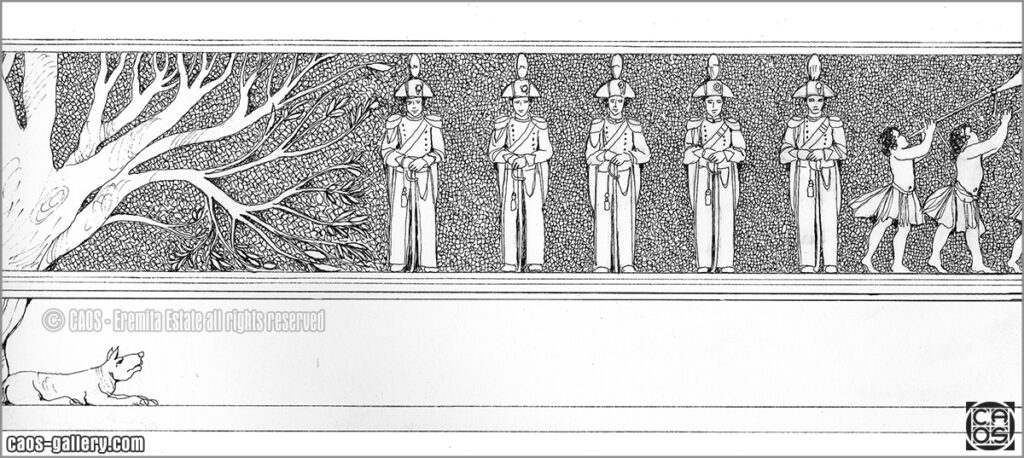
Continuing the reading of the artwork, at the two ends we find imposing trees: an oak and an olive tree, which immediately introduce the naturalistic and vital idea of the context and represent the solidity and resilience of a society based on law, as well as evoking power of family values. The oak has numerous sumbols in various cultures and history. It is considered the tree of life, of wisdom, of strength, of the ability to overcome difficult moments. Its powerful foliage and powerful roots hope for the unity of the hearth and fertility, also understood as the abstract meaning of fertility of ideas and values. The oak in heraldry is the most noble tree and embodies the most positive values; among the many here stands out that of the indomitable and courageous spirit. The olive tree also symbolizes positive values: peace, victory, fame and immortal glory. Both plants are represented at the ends to include the whole scene and give it a sense of spiritual and material gathering within these shared values.
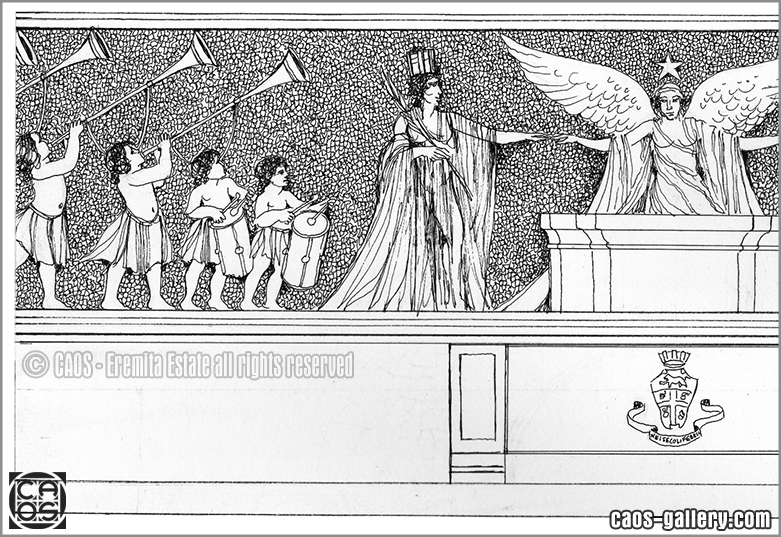
At the foot of the trees there are two large wolf dogs, crouched but with their ears pricked and their watchful gaze turned towards the altar. They are the symbol of loyalty but also of attention and affection towards hierarchy and authority; furthermore, they personify the inductive reasoning typical of intuition originating from instinct. This is a fundamental quality for the capable man of arms, for the talented investigator who dissolves the plots of evil.
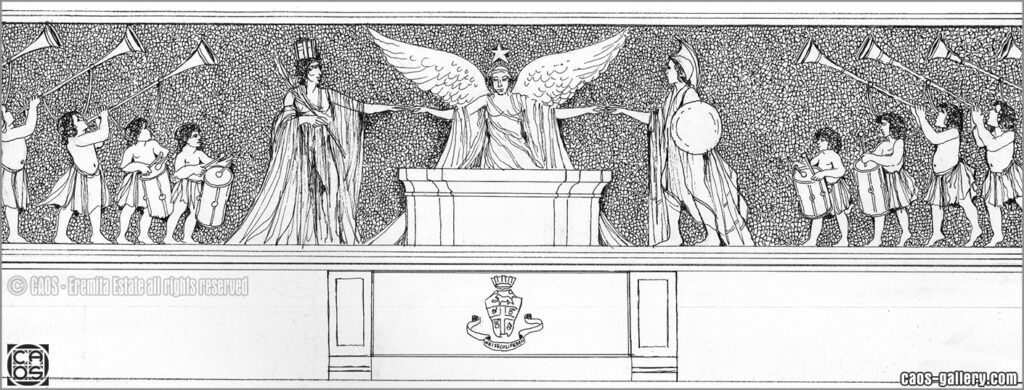
After the wolfdog, four groups of three human figures follow on each side. The groups of three have the function of evoking the three forces of the human soul: intelligence, will, memory. The four groups symbolize all of creation: earth, water, air, fire. The first group of three consists of mounted Carabinieri in Ceremonial Uniform with Lucerne. The interesting thing here, as already mentioned, is the pose of the steeds, each with its own particular emotionality: there is the one that wants to retreat, the one that advances, the one that bites the reins, the one that quivers excitedly. These animals represent the porgress of man in its double meaning, positive and negative. The first as technological and scientific advancement, the second as the overwhelming impetus of the war of conquest; this is why they must be restrained, controlled and wisely guided by the authority and order of law and executive power:
Carabinieri in Ceremonial Uniform with Lucerne and Saber follow; their pose is on guard, compliant with military protocol; they do not greet the Officer as they are not in front of him but alongside him and therefore are in the exact position of surveillance. They are hieratic fogures like Winged Victory; this is because they embody an institution that must be fair, neutral, incorruptible and faithful to the fundamental principles that are enshrined in the moral legislation, which always introduces every Regulation of the Force. From the Carabinieri onwards, an elevated structure was built which has a dual function:
- technically, it allows the development of the scene to be kept on the same visual level as the knights and therefore to give the necessary relevance to what is represented;
- formally marks a passage, a transition from earthly values to spiritual values, the three carabinieri guard this transition.
The whole artwork is constructed as a double climax which, from the two ends, proceeds towards the centre; a climax of emotions and symbolic references.
Let’s proceed.
The carabinieri on guard are at the end of the most central part of the artwork because this contains the most significant and particular evocative and ritual references. If trees, dogs, horses and riders exhibited broader and more universal meanings; after the carabinieri on guard you enter a more spiritual world. Here are the three female figures playing the tuba and the three children beating the drums. They are adolescents and children in non-modern clothes but referring to a timeless, mystical or mythological reality. The former recall the Nikai, who meet the heroes of battles or the heroes of races, providing them with the best wishes.
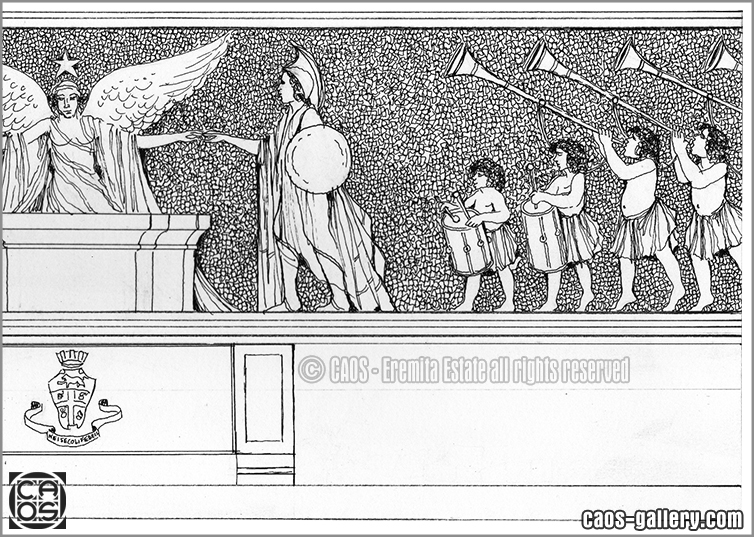
Here the contact with contemporaneity fades but, i would say better, with everyday life. We enter the world of myths, populated by entities that are almost abstract or whose distant memory has left us only the aura of myth; we approach the altar of Maritano. The artist intended to recall music in this sector of the artwork, since it is his second great muse; but also because here is the fundamental role of harmony and rhythm, in marking many aspects of human action. The battle, as well as the race, as well as the growth of a boy, are established with a particular tempo, a particular tuning. The women of the antiquity discovered that, when the drum was beaten, the little plant grew better and faster; grasping a mysterious vital force, they began to use this instrument to accompany the passage to the afterlife or to recall souls from the world of the dead in long shamanic sessions. Entire civilizations used rhythmic sounds and powerful, rigorous harmonies to create fear in the adversary, to multiply the charisma of leaders and armies, to keep high the morale of the troops.
So here are the three boys with the drums. From the good wishes, raised with the metallic hymn of the Nikai tuba to the supernatural suction of the rhythmic ecstasy with which the deserving deceased is granted, again and forever, a breath of vital force, in order to never sever the bond of life; indeed, to recall its spirit and transmit it, through empathy, to those who are exposed to the rhythmic beats and translated into an ideal silent harmony, the users of the artwork for example. Girls and boys made musicians; so that hymns and rhythms come from the innocence and candor of those who are still strangers to human afflictions. Therefore, as already stated, no funereal references but, if anything, multiple vital and spiritual references, with the most spontaneous affection for what is clear and universal about the spirit.
Once past the musicians, we enter the heart of a representation that becomes completely otherworldly and fully symbolic. At the center of it is the altar dedicated to Marshal Felice Maritano. It is a place where every force and every value evoked by the artwork converges; it is the fulcrum and point of balance of everything; all around it is natural that the results of these contents can manifest themselves, just as, in the act of sacrifice, the supreme spirituality of moral and compassionate strength was manifested; conducted throughout an entire lifetime of righteousness. It therefore happens that the atmosphere above the altar lights up with golden light; shortly before two solemn, purely symbolic figures materialize nearby. To the left the observer appears the personification of Italia Turrita who carries, in her right hand, the palm branch symbolizing Christian values and martyrdom; to the right of the observer the “Symbolic Soldier” appears in timeless and mythical guise, personified by Hector of Troy; the one who, to prevent the enemy from gaining the upper hand, faces it by shielding his people. These two presences approach the altar discreetly, maintaining a slight distance of respect and extend their hand towards the third who, after them and thanks to them, is revealed: the Winged Victory emerges from the altar with long and light and graceful robes wings; but strong and delineated. She is in a hieratic and silent pose, indifferent to wealth, power or references, she is the Victory of the Righteous, not the victory of the oppressor. She offers her hands to the two guests as a sign of sharing but also in order to give them both yet another light. Here is the last and most compelling trinity: the sense of the Fatherland, the sense of Justice, the sense of Sacrifice. Precious meanings, completely abstract and, therefore, delicate and fragile, if not preserved and handed down with conviction and love; not imposed or inculcated with bombastic rhetoric but offered to understanding with patience, respect and empathy, in a world of continuous and controversial change, with the certainty that they are immortal and universal values, with the awareness that they will always be attacked and vilified; but that only the integrity and humanity of their promulgators and their defenders will be able to pass on, improving them.
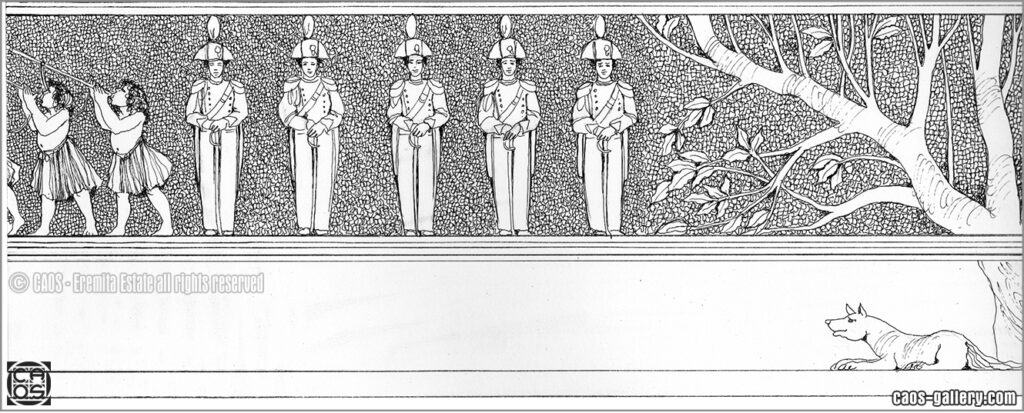
This artwork is therefore a path towards abstraction which, from the most concrete and earthly values ( trees, dogs, horses ) leads to the highest and most ideal values ( fatherland, justice, sacrifice ), a path which, from the strength of physicality leads to the strength of the mind and of spirituality; a path which, in the delicate and discreet plastic representation, if it remains devoid of the contribution of ordinary people highlights all its fragility and impermanence. Ideas and values always travel on the legs of people.
The chromaticity of the artwork is minimal to enhance its rigor and give the dramatic tone, balancing the sweetness of the figures. The mosaic background is in shades of grey/green and grey/blue marble to shade; while the part above the altar is in glass mosaic with 24kt gold in order to give sacredness and brightness to the fulcrum of the entire artwork. The bas-relief sculptures are essentially monochromatic.

